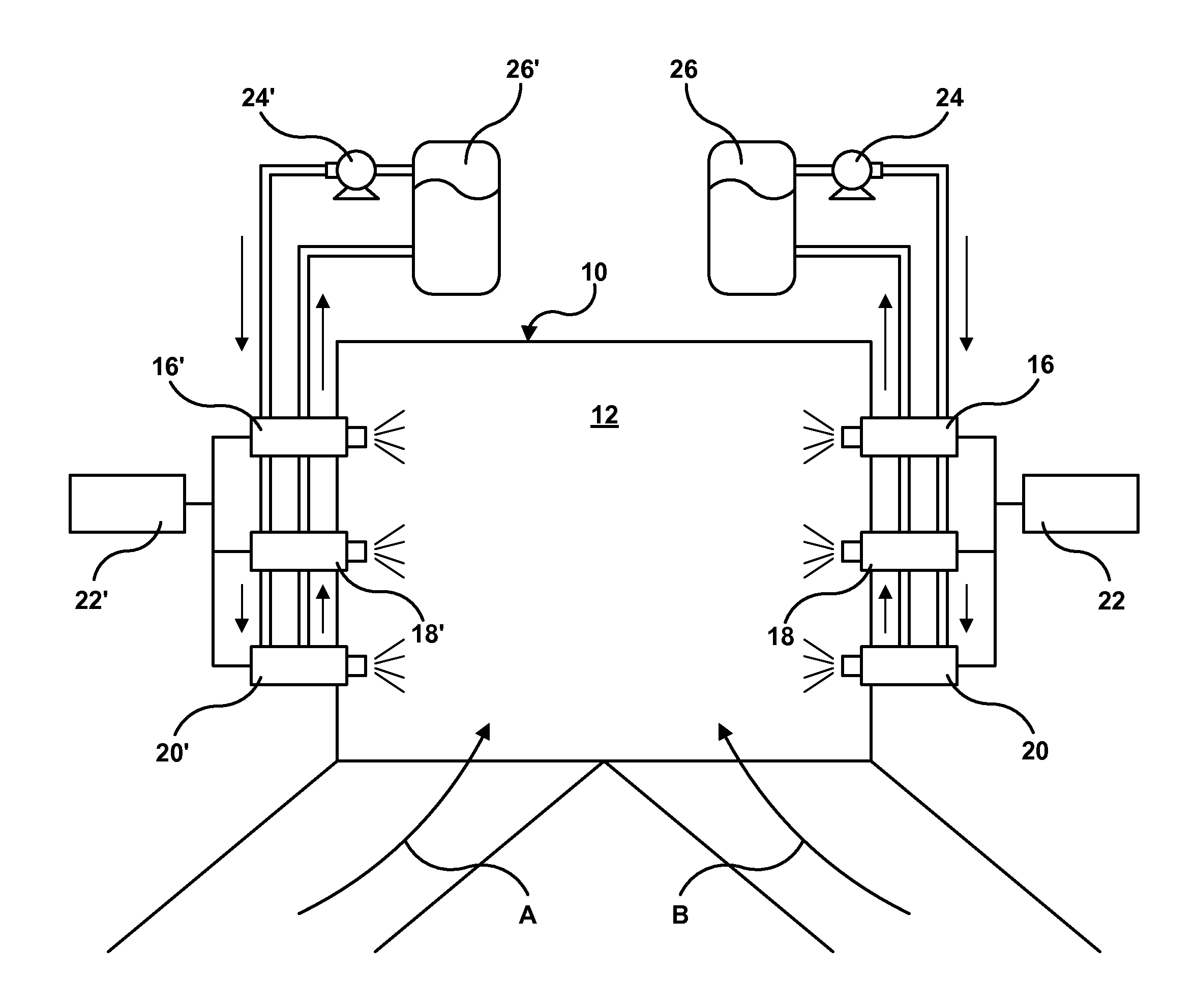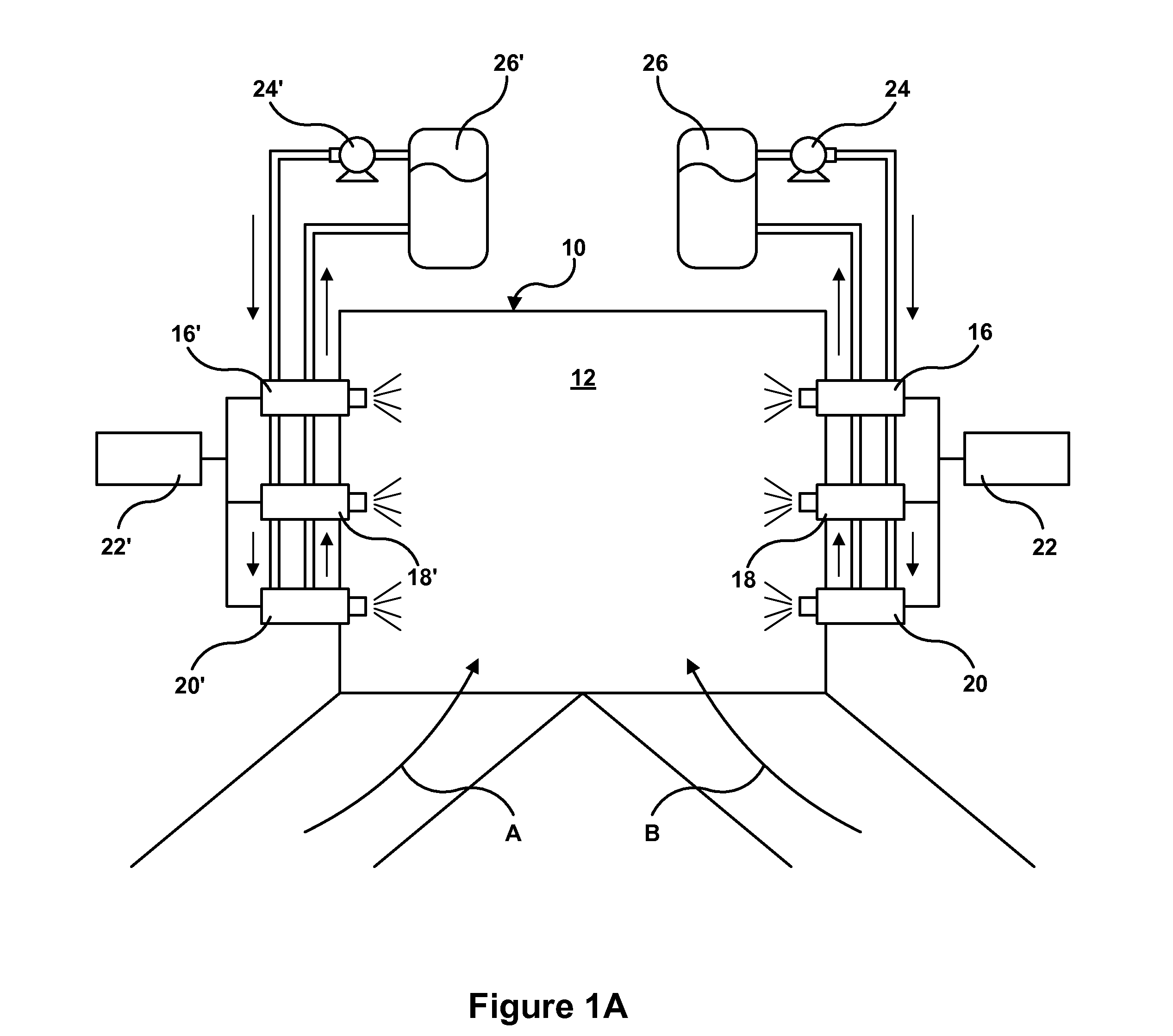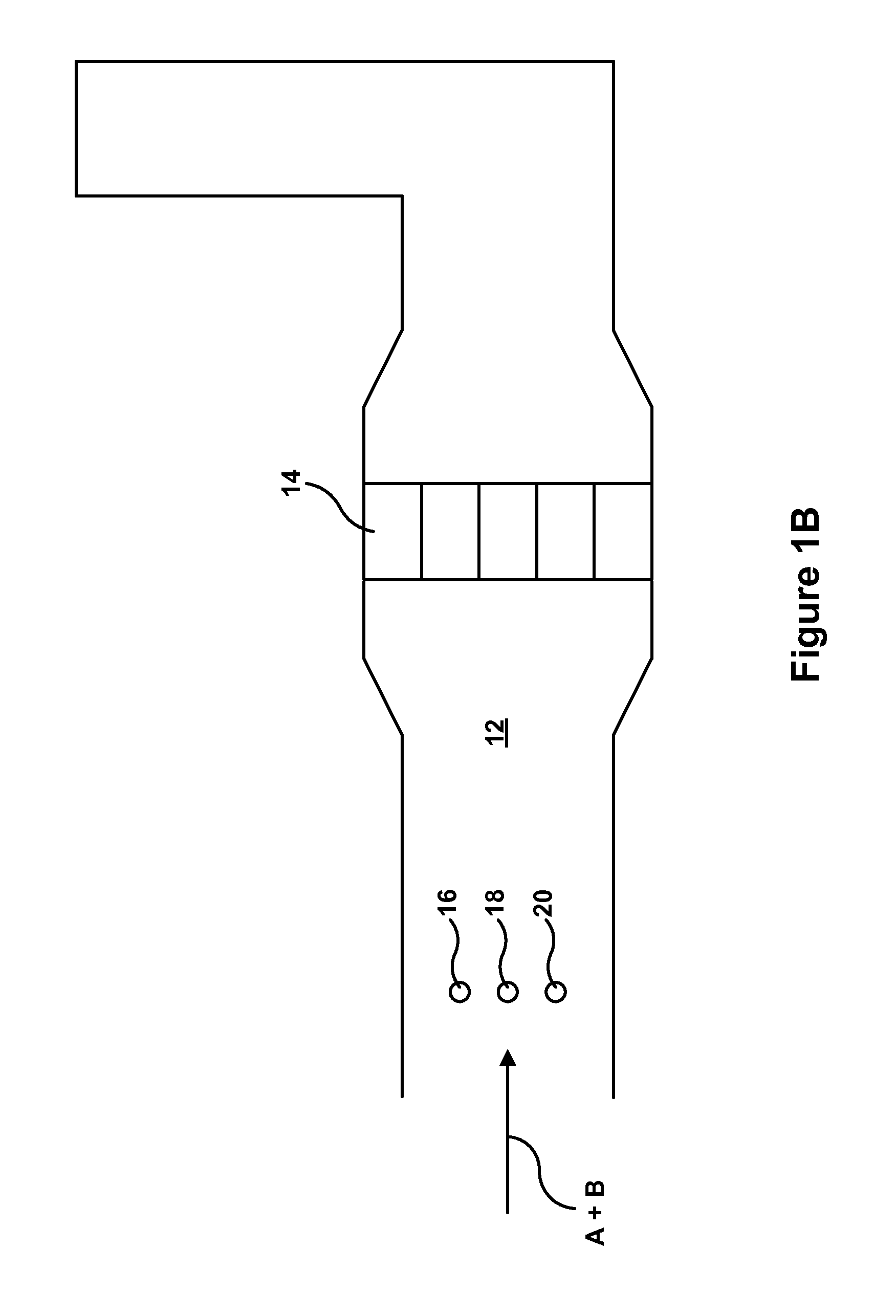System and Method for Sequential Injection of Reagent to Reduce NOx from Combustion Sources
a technology of nox and reagents, which is applied in the field of sequential injection of reagents to reduce nox from combustion sources, can solve the problem of short duration of reagent injection into the duct, and achieve the effect of reducing the time of nox injection
- Summary
- Abstract
- Description
- Claims
- Application Information
AI Technical Summary
Benefits of technology
Problems solved by technology
Method used
Image
Examples
Embodiment Construction
[0031]Referring first to FIGS. 1A and 1B, an exemplary embodiment of a system (10) for reducing NOx emissions from a lean burn combustion source configured in accordance with the present invention includes a common duct (12), which is fed with exhaust gases (indicated by arrows A and B) from two identical 55,000 pph natural gas fired boilers (not shown). A common SCR catalyst (14) is placed in the duct (12) at a distance downstream from where the two boiler outlets (shown in the vicinity of arrows A and B in FIG. 1A) combine into the common duct (12).
[0032]A water based urea solution is injected into the duct (12) at a rate sufficient to reduce the NOx emissions across the catalyst (14) by a predetermined amount using six solenoid actuated injectors (16, 16′, 18, 18′, 20, 20′) CFD modeling is used to predict where on the exhaust duct (12) the six injectors (16, 16′, 18, 18′, 20, 20′) should be located as described in commonly owned U.S. Patent Application Publication No. US 2014 / 009...
PUM
 Login to View More
Login to View More Abstract
Description
Claims
Application Information
 Login to View More
Login to View More - R&D
- Intellectual Property
- Life Sciences
- Materials
- Tech Scout
- Unparalleled Data Quality
- Higher Quality Content
- 60% Fewer Hallucinations
Browse by: Latest US Patents, China's latest patents, Technical Efficacy Thesaurus, Application Domain, Technology Topic, Popular Technical Reports.
© 2025 PatSnap. All rights reserved.Legal|Privacy policy|Modern Slavery Act Transparency Statement|Sitemap|About US| Contact US: help@patsnap.com



